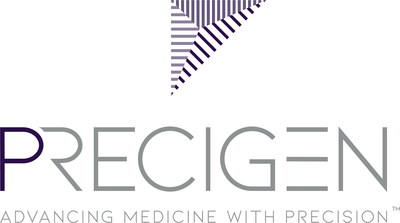Precigen Announces Clearance of IND to Initiate Phase I Study of PRGN-2012 AdenoVerse™ Immunotherapy in Patients with Recurrent Respiratory Papillomatosis (RRP)
On January 5, 2021, Precigen (Nasdaq: PGEN) announced FDA clearance for its IND application to start a Phase I clinical trial for PRGN-2012, an investigational immunotherapy for recurrent respiratory papillomatosis (RRP), a rare disease caused by HPV types 6 and 11. This trial aims to evaluate the safety and tolerability of PRGN-2012, which utilizes Precigen's proprietary gorilla adenovector technology. The study will enroll 12 patients to assess the treatment's efficacy following surgical removal of the disease. Precigen's collaboration with the NCI aims to address unmet medical needs in RRP patients.
- FDA clearance for IND application to initiate Phase I trial of PRGN-2012.
- PRGN-2012 uses innovative gorilla adenovector technology for enhanced safety.
- Strong preclinical data showing immune response against HPV 6 and HPV 11.
- Collaboration with NCI enhances development speed and cost-effectiveness.
- None.
Insights
Analyzing...
GERMANTOWN, Md., Jan. 5, 2021 /PRNewswire/ -- Precigen, Inc. (Nasdaq: PGEN), a biopharmaceutical company specializing in the development of innovative gene and cell therapies to improve the lives of patients, today announced that the US Food and Drug Administration (FDA) has cleared the Investigational New Drug (IND) application to initiate a Phase I clinical trial of Precigen's PRGN-2012, a first-in-class, investigational off-the-shelf (OTS) AdenoVerse™ immunotherapy in adult patients with recurrent respiratory papillomatosis (RRP). RRP is a rare, difficult-to-treat and sometimes fatal neoplastic disease of the upper and lower respiratory tracts caused by human papillomavirus (HPV) type 6 (HPV 6) or HPV type 11 (HPV 11).1-4
PRGN-2012 is an innovative therapeutic vaccine with optimized antigen design that uses Precigen's gorilla adenovector technology, part of Precigen's proprietary AdenoVerse platform, to elicit immune responses directed against cells infected with HPV 6 or HPV 11. Gorilla adenovectors have numerous advantages, including the ability for repeat administration, the inability to replicate in vivo, which may improve safety, and the ability to deliver large payload capacity. In preclinical models, PRGN-2012 has demonstrated strong and specific immune response against HPV 6 and HPV 11.
The Phase I study will follow 3+3 dose escalation of PRGN-2012 as an adjuvant immunotherapy following standard-of-care surgical removal of visible papillomatosis disease. Patients will receive up to four injections of PRGN-2012. The primary objective of the study is to determine safety and tolerability and recommended Phase II dose (RP2D) of PRGN-2012. The study will enroll 3 to 6 subjects at each dose level, and 12 patients will be treated at the maximum tolerated dose.
PRGN-2012 is under development through a Cooperative Research and Development Agreement, or CRADA, with the Center for Cancer Research (CCR) at the National Cancer Institute (NCI). This CRADA has allowed Precigen to rapidly and cost-effectively advance PRGN-2012 to the clinic. The Phase I clinical study of PRGN-2012 will be led by Clint T. Allen, MD, Principal Investigator, Section on Translational Tumor Immunology, of the National Institute on Deafness and Other Communication Disorders (NIDCD), and Scott M. Norberg, DO, Assistant Research Physician, Genitourinary Malignancies Branch, of CCR NCI.
"For patients with RRP there is an urgent need for adjuvant treatment options to reduce the number of devastating repeat surgical procedures to remove papillomatous lesions," said Helen Sabzevari, PhD, President and CEO of Precigen. "This is our second AdenoVerse immunotherapy IND in collaboration with NCI and is a testament to our strong, collaborative relationship and our ability to work together to quickly advance promising assets where there is high unmet patient need."
###
About Recurrent Respiratory Papillomatosis (RRP)
Recurrent respiratory papillomatosis (RRP) is a rare, difficult-to-treat and sometimes fatal neoplastic disease of the upper and lower respiratory tracts that is caused by infection with HPV 6 or HPV 11.1-4 RRP is classified based on age of onset as juvenile or adult. Juvenile-onset disease has an incidence of 4 per 100,000 and adult-onset RRP has an incidence of 2 to 3 per 100,000. There is no cure for RRP and the current standard-of-care is repeated endoscopic debulking with ablation or excision of papillomatous lesions.3,4 Recurrence of papilloma after surgical removal is very common and repeated procedures are required to debulk and monitor the disease, which exposes patients to anesthetic and surgical risks, and emotional distress. RRP morbidity and mortality results from the effects of papilloma mass on the vocal cords, trachea, and lungs, which may cause voice changes, stridor, airway occlusion, loss of lung volume, and/or post-obstructive pneumonia.5 Although rare, one to three percent of RRP cases can transform into invasive squamous cell carcinoma.6,7
Precigen: Advancing Medicine with Precision™
Precigen (Nasdaq: PGEN) is a dedicated discovery and clinical stage biopharmaceutical company advancing the next generation of gene and cell therapies using precision technology to target the most urgent and intractable diseases in our core therapeutic areas of immuno-oncology, autoimmune disorders, and infectious diseases. Our technologies enable us to find innovative solutions for affordable biotherapeutics in a controlled manner. Precigen operates as an innovation engine progressing a preclinical and clinical pipeline of well-differentiated unique therapies toward clinical proof-of-concept and commercialization. For more information about Precigen, visit www.precigen.com or follow us on Twitter @Precigen and LinkedIn.
Trademarks
Precigen, AdenoVerse and Advancing Medicine with Precision are trademarks of Precigen and/or its affiliates. Other names may be trademarks of their respective owners.
Cautionary Statement Regarding Forward-Looking Statements
Some of the statements made in this press release are forward-looking statements. These forward-looking statements are based upon the Company's current expectations and projections about future events and generally relate to plans, objectives, and expectations for the development of the Company's business, including the timing and progress of preclinical studies, clinical trials, discovery programs and related milestones, the promise of the Company's portfolio of therapies, and in particular its CAR-T therapies, and the Company's refocus to a healthcare-oriented business. Although management believes that the plans and objectives reflected in or suggested by these forward-looking statements are reasonable, all forward-looking statements involve risks and uncertainties, including the possibility that the timeline for the Company's clinical trials might be impacted by the COVID-19 pandemic, and actual future results may be materially different from the plans, objectives and expectations expressed in this press release. The Company has no obligation to provide any updates to these forward-looking statements even if its expectations change. All forward-looking statements are expressly qualified in their entirety by this cautionary statement. For further information on potential risks and uncertainties, and other important factors, any of which could cause the Company's actual results to differ from those contained in the forward-looking statements, see the section entitled "Risk Factors" in the Company's most recent Annual Report on Form 10-K and subsequent reports filed with the Securities and Exchange Commission.
References
1 Mounts, P et al. (1982). "Viral etiology of juvenile- and adult-onset squamous papilloma of the larynx." Proc Natl Acad Sci U S A 79(17): 5425-5429.
2 Smith, E et al. (1993). "Human papillomavirus infection in papillomas and nondiseased respiratory sites of patients with recurrent respiratory papillomatosis using the polymerase chain reaction." Arch Otolaryngol Head Neck Surg 119(5): 554-557.
3 Derkay, CS et al. (2008). "Recurrent respiratory papillomatosis: a review." Laryngoscope 118(7): 1236-1247.
4 Derkay, CS et al. (2019). "Update on Recurrent Respiratory Papillomatosis." Otolaryngol Clin North Am 52(4): 669-679.
5 Seedat, RY (2020). "Juvenile-Onset Recurrent Respiratory Papillomatosis Diagnosis and Management - A Developing Country Review." Pediatric Health Med Ther 11: 39-46.
6 Dedo, HH et al. (2001). "CO(2) laser treatment in 244 patients with respiratory papillomas." Laryngoscope 111(9): 1639-1644.
7 Silver, RD et al. (2003). "Diagnosis and management of pulmonary metastasis from recurrent respiratory papillomatosis." Otolaryngol Head Neck Surg 129(6): 622-629.
For more information, contact:
Investor Contact: Steven Harasym Vice President, Investor Relations Tel: +1 (301) 556-9850 | Media Contact: Glenn Silver Lazar-FINN Partners |
![]() View original content to download multimedia:http://www.prnewswire.com/news-releases/precigen-announces-clearance-of-ind-to-initiate-phase-i-study-of-prgn-2012-adenoverse-immunotherapy-in-patients-with-recurrent-respiratory-papillomatosis-rrp-301200592.html
View original content to download multimedia:http://www.prnewswire.com/news-releases/precigen-announces-clearance-of-ind-to-initiate-phase-i-study-of-prgn-2012-adenoverse-immunotherapy-in-patients-with-recurrent-respiratory-papillomatosis-rrp-301200592.html
SOURCE Precigen, Inc.








